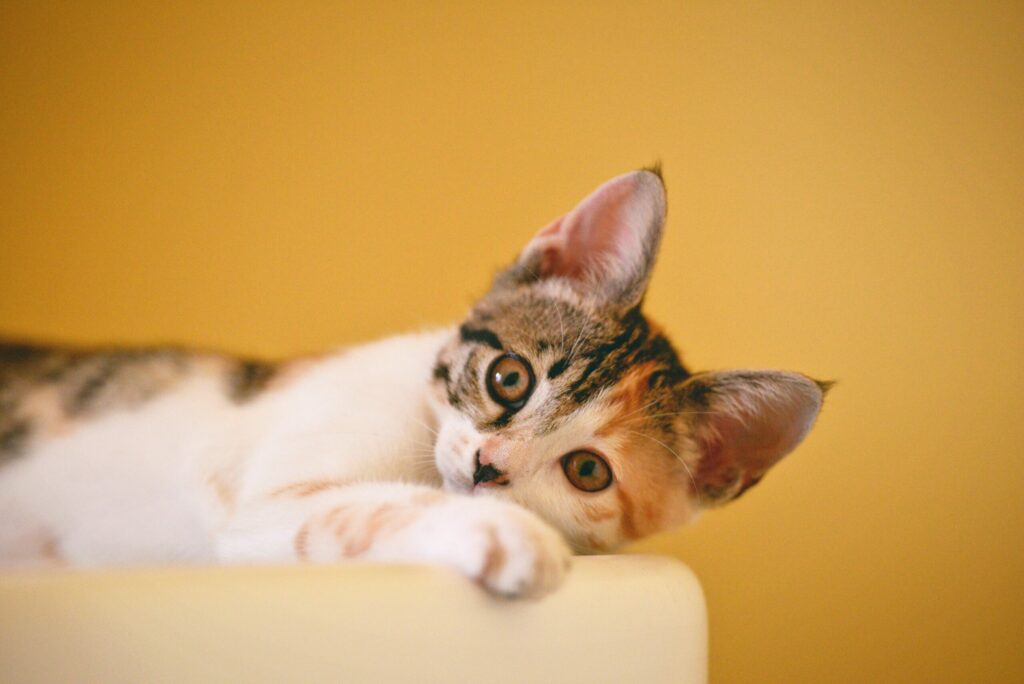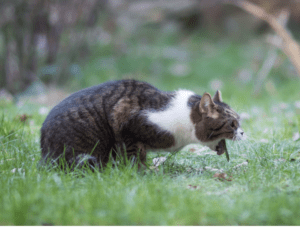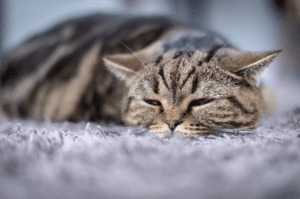Hyperthyroidism is a common endocrine disorder in cats, primarily affecting older felines. It results from an overactive thyroid gland, which is responsible for producing thyroid hormones. The thyroid hormones, thyroxine (T4) and triiodothyronine (T3), play a crucial role in regulating the body’s metabolism.
In cats with hyperthyroidism, there is an excessive production of thyroid hormones, leading to an increased metabolic rate. This condition can have various effects on a cat’s health. The most common cause of hyperthyroidism in cats is a benign (non-cancerous) tumor called an adenoma that develops within the thyroid gland. In some cases, hyperthyroidism may be associated with thyroid carcinoma (cancer).
Symptoms of hyperthyroidism in cats may include:
Weight Loss: Despite an increased appetite, cats with hyperthyroidism often experience weight loss.
Increased Appetite: Hyperthyroid cats may show a significant increase in their appetite, yet still lose weight.
Hyperactivity and Restlessness: Cats may become more active, restless, and show increased energy levels.
Vomiting and Diarrhea: Gastrointestinal symptoms, such as vomiting and diarrhea, are common in hyperthyroid cats.
Increased Heart Rate: Hyperthyroidism can lead to an elevated heart rate (tachycardia).
Poor Coat Condition: Cats may develop a dull, unkempt, or greasy coat.
Increased Thirst and Urination: Some cats with hyperthyroidism may drink more water and urinate more frequently.
Hyperthermia: Elevated body temperature may occur, leading to increased body heat.
How Do Cats Get Hyperthyroidism?
Hyperthyroidism in cats is primarily caused by an overactive thyroid gland, leading to excessive production of thyroid hormones. The most common cause of hyperthyroidism in cats is the development of benign tumors called adenomas within the thyroid glands. Here are some key points about how cats develop hyperthyroidism:
Thyroid Adenomas: In approximately 98% of hyperthyroid cases in cats, one or both thyroid glands develop adenomas, which are non-cancerous tumors. These adenomas result in the overproduction of thyroid hormones (thyroxine and triiodothyronine).
Age Factor: Hyperthyroidism is typically a disease of older cats, with the majority of affected cats being over 10 years old. The average age of onset is around 12 to 13 years.
Risk Factors: The exact cause of the development of thyroid tumors is not entirely understood, but several factors are believed to contribute. Some potential risk factors include exposure to certain environmental pollutants, such as flame retardants and polybrominated diphenyl ethers (PBDEs), as well as dietary factors.
Genetics: There may be a genetic predisposition to hyperthyroidism in some cat breeds. However, it can occur in any breed or mixed-breed cat.
Dietary Influences: Some studies have suggested a potential link between certain dietary factors and the development of hyperthyroidism. Specifically, diets containing high levels of iodine or certain canned cat foods have been investigated as potential contributors.
Environmental Factors: Exposure to environmental pollutants, particularly brominated flame retardants, has been studied as a potential risk factor for hyperthyroidism in cats. These chemicals may be found in household items, including furniture and carpets.
It’s important to note that while these factors may be associated with an increased risk of hyperthyroidism, the exact cause of the condition is not fully understood. Additionally, not all older cats with thyroid tumors develop hyperthyroidism.
What Are The Treatment of Hyperthyroidism in Cats?
The treatment of hyperthyroidism in cats aims to restore normal thyroid hormone levels and manage the symptoms associated with the condition. Several treatment options are available, and the choice depends on factors such as the cat’s overall health, the severity of the hyperthyroidism, and the owner’s preferences. Here are the main treatment options for hyperthyroidism in cats:
Medication:
- Methimazole (Tapazole): This medication is commonly used to manage hyperthyroidism in cats. Methimazole works by inhibiting the production of thyroid hormones. It can be administered orally as a tablet or compounded into a liquid form.
- Carbimazole: In some regions, veterinarians may use carbimazole, which is converted to methimazole in the body.
Dietary Management:
- Prescription Diets: Special prescription diets with limited iodine content, such as Hill’s y/d Feline Thyroid Health, are available. These diets aim to reduce the intake of iodine, a necessary component for thyroid hormone synthesis. However, they may not be suitable for all cats and may require strict feeding management.
Radioactive Iodine Therapy (I-131):
- Iodine-131 Treatment: This is considered a highly effective and curative treatment for hyperthyroidism. Cats are given a small, controlled dose of radioactive iodine, which selectively destroys overactive thyroid tissue while sparing normal tissue. It requires hospitalization for a short period until the cat’s radioactivity decreases to safe levels.
Surgery:
- Thyroidectomy: Surgical removal of the affected thyroid gland(s) can be performed. This may be a suitable option for some cats, but it requires general anesthesia and carries the risks associated with surgery.
Monitoring and Follow-up:
- Regular Check-ups: Regardless of the chosen treatment, cats with hyperthyroidism require regular veterinary check-ups to monitor thyroid hormone levels, assess overall health, and make any necessary adjustments to the treatment plan.

Each treatment option has its advantages and considerations, and the choice should be made in consultation with a veterinarian. The decision may be influenced by factors such as the cat’s age, overall health, owner’s preferences, and the availability of specific treatments in the region.
If you suspect that your cat may have hyperthyroidism, it’s crucial to consult with a veterinarian. Diagnosis involves blood tests to measure thyroid hormone levels. Treatment options for hyperthyroidism in cats may include medication, dietary management, radioactive iodine therapy, or surgical removal of the affected thyroid tissue.
Untreated hyperthyroidism can lead to serious complications, including heart disease, hypertension (high blood pressure), and other organ dysfunction. Early diagnosis and appropriate management can help improve the quality of life for cats with hyperthyroidism.









